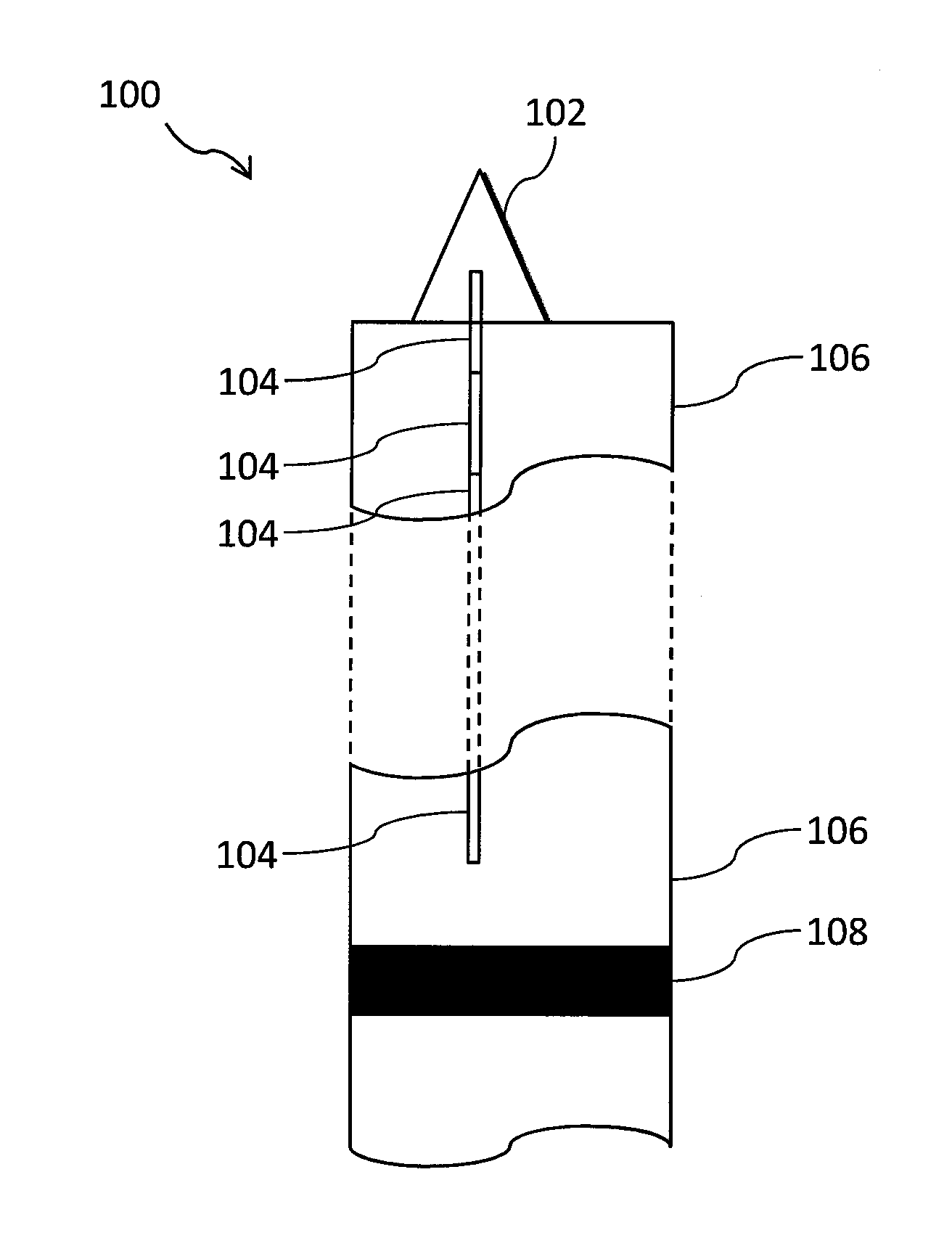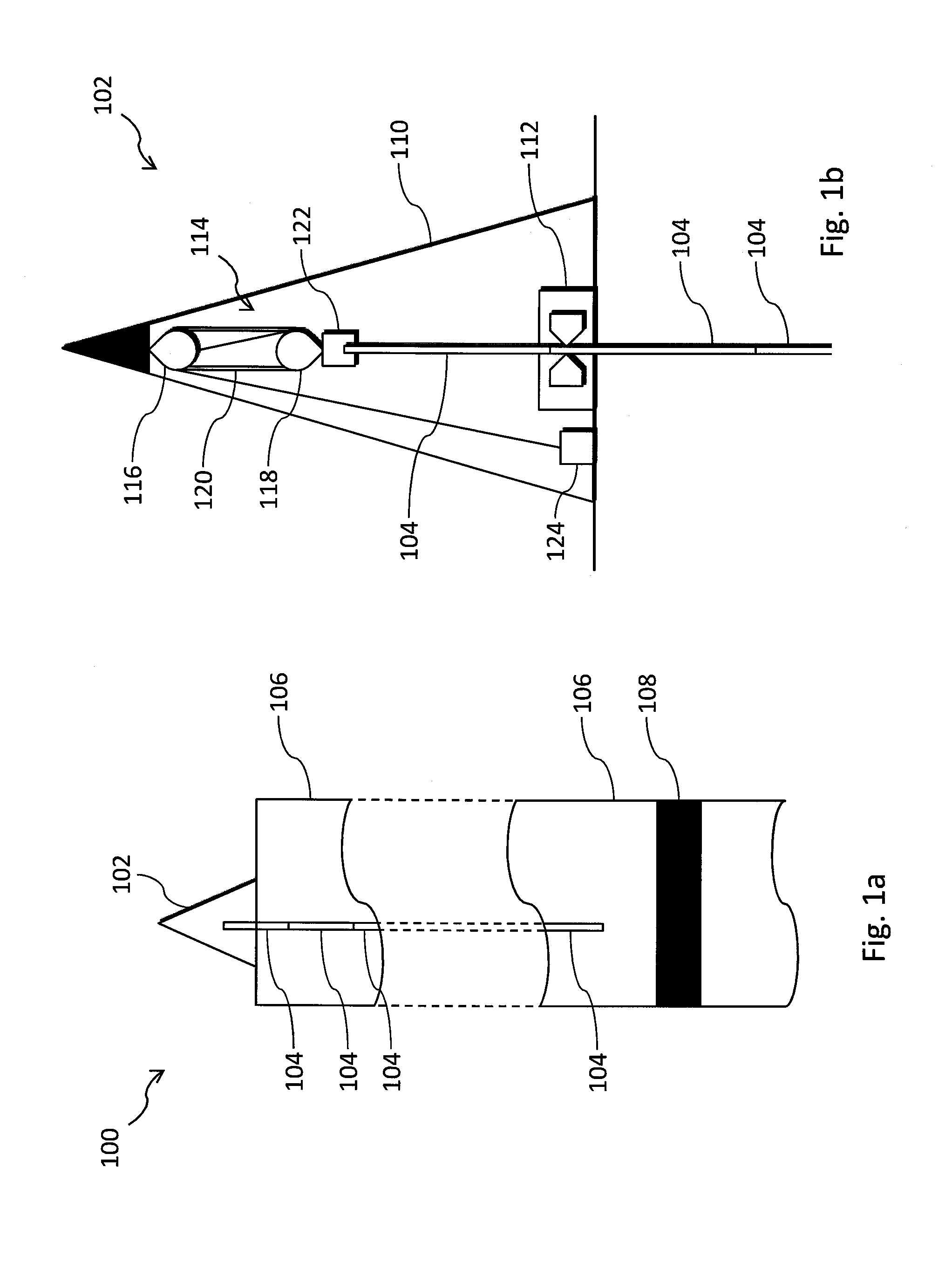Identifying Forces in a Well Bore
- Summary
- Abstract
- Description
- Claims
- Application Information
AI Technical Summary
Benefits of technology
Problems solved by technology
Method used
Image
Examples
Embodiment Construction
[0047]FIG. 1a shows a schematic diagram of a drilling rig system 100 with which embodiments may be used. The embodiment below will be described generally in the context of a casing string being lowered by a drilling rig into an oil well bore. However it will be apparent that embodiments are not limited to such situations, and includes the situations in which any member, in particular, a tubular member, is moved (i.e. lowered or raised) within a well bore. Such situations would include, but are not limited to, the drilling of both production and injection wells for a oil or gas recovery system, as well as the drilling of well bores into aquifers and the like.
[0048]The system 100 comprises a drilling rig 102 which is configured to drill into the rock formations below it. A casing string, comprising a plurality of joints 104, is shown extending into the rock formations from the rig 102. The rock formations comprise a first layer 106, below which a hydrocarbon bearing reservoir 108 is l...
PUM
 Login to View More
Login to View More Abstract
Description
Claims
Application Information
 Login to View More
Login to View More - R&D
- Intellectual Property
- Life Sciences
- Materials
- Tech Scout
- Unparalleled Data Quality
- Higher Quality Content
- 60% Fewer Hallucinations
Browse by: Latest US Patents, China's latest patents, Technical Efficacy Thesaurus, Application Domain, Technology Topic, Popular Technical Reports.
© 2025 PatSnap. All rights reserved.Legal|Privacy policy|Modern Slavery Act Transparency Statement|Sitemap|About US| Contact US: help@patsnap.com



